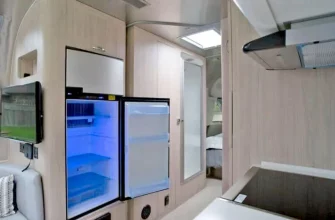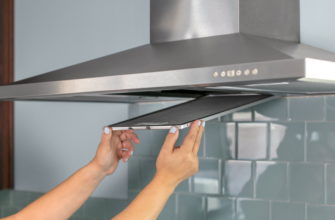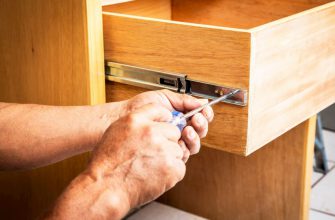Replacing a countertop in a mobile home can seem like a daunting task, but with the right planning and preparation, it can be a straightforward DIY project. Whether your existing laminate countertop is worn out or you want to upgrade to a more stylish solid surface material, understanding the process will set you up for success.
In this comprehensive guide, we’ll walk through everything you need to know to replace a mobile home countertop yourself. We’ll start by looking at the advantages of a new countertop and how to assess your needs. Next, we’ll cover key steps like prepping your workspace, removing old countertops, installing new materials, making custom adjustments, and adding finishing touches.
By the end, you’ll have the confidence to tackle this project start to finish. Let’s get into the specifics!
- Advantages of Replacing a Mobile Home Countertop
- Assessing Your Countertop Needs
- Identifying the Current Countertop Material
- Laminate Countertops
- Solid Surface Countertops
- Evaluating the Condition of the Existing Countertop
- Selecting the New Countertop Material
- Choosing Between Laminate, Stone, or Other Materials
- Understanding the Installation Requirements for Different Materials
- Preparing for Replacement
- Gathering Tools and Materials
- Measuring and Planning for the Replacement
- Removing the Old Countertop
- Potential Challenges with Removing the Countertop
- Inspecting the Substrate for Damage
- Installing the New Countertop
- Preparing the Substrate
- Cutting and Fitting the New Countertop
- Sealing and Finishing Touches
- Additional Considerations
- Upgrading Other Kitchen Features
- Addressing Maintenance and Care for the New Countertop
- Budgeting and Cost Considerations
- Considering Professional Help for Complex Installations
- Conclusion
Advantages of Replacing a Mobile Home Countertop
Upgrading your existing mobile home countertops offers many benefits that can enhance your kitchen’s functionality and appearance. Here are some of the top reasons to consider replacing your countertops:
- Improve aesthetics – New countertops can transform the entire look of your kitchen by allowing you to update colors, patterns, and styles.
- Enhance durability – Materials like quartz and solid surface stand up better over time than laminate.
- Easier maintenance – You’ll reduce day-to-day cleaning hassles with nonporous materials that resist stains.
- Increase functionality – New countertops present the chance to adjust sizing, depth, and built-in features.
- Boost home value – Kitchen updates like new countertops can boost resale value down the road.
The key is making sure you choose the right material and install it properly. This guide will cover all the key steps to help you maximize the benefits.
Assessing Your Countertop Needs
Before you start demolition on your existing countertop, it’s important to fully assess your needs and kitchen layout. This evaluation will guide the rest of the replacement process so you end up with your dream countertop.
Identifying the Current Countertop Material
Pinpointing your current countertop material is the first step. In mobile homes, laminate and solid surface materials are the most common.
Laminate Countertops
Laminate countertops consist of a plastic resin layer on top of a plywood or particle board base. Benefits include an extensive range of colors/patterns and a lower cost. Drawbacks involve susceptibility to damage from heat and liquids.
Solid Surface Countertops
Solid surface countertops are made from polyester or acrylic resins mixed with minerals and pigments. They are more seamless in appearance and durable than laminate but also more expensive.
Evaluating the Condition of the Existing Countertop
Assess the current state of your countertops by checking for any cracks, stains, delamination, heat damage, etc. Pay special attention to high wear areas near sinks and stoves. This will determine whether small repairs may suffice or full replacement is necessary.
Selecting the New Countertop Material
Choose your replacement material based on aesthetics, functionality, durability, and cost. Popular options include:
- Laminate – Most affordable option, available in countless colors/patterns.
- Solid surface – More durable than laminate, seamless appearance.
- Quartz – Highly durable, heat/scratch-resistant, variety of styles.
- Tile – Great for a built-in look, requires more extensive install.
Choosing Between Laminate, Stone, or Other Materials
Laminate and solid surface materials are the easiest for DIY replacement. Quartz and natural stone offer superior durability but require expert installation. Tile is also a great option but requires more cutting and preparation.
Understanding the Installation Requirements for Different Materials
Laminate countertops just need adhesive applied to the substrate before pressing into place. Solid surface, quartz, stone, and tile all require carefully measuring and cutting pieces to fit before adhering. This may involve clipping corners, notching for sinks, etc. Proper sealing is also key for nonporous materials.
Preparing for Replacement
With your countertop needs assessed, it’s time to gather supplies and make sure your workspace is prepped for demo. Rushing into cutting out your old countertop without proper planning will only lead to headaches down the road.
Gathering Tools and Materials
Assemble all the tools and replacement materials you’ll need beforehand so they are on hand during the install process. Essentials include:
- Tape measure.
- Pry bar.
- Sawzall.
- Adhesive.
- New countertop pieces.
- Sealant.
For solid surface, stone, quartz, or tile, you may also need a wet saw for precise cuts. Having spare materials is also wise in case mistakes happen.
Measuring and Planning for the Replacement
Carefully measure your existing countertops and draw up a template for the new pieces you’ll need. Plan how seams and edges will fit together. Leave a 1/8″ gap between the wall and edges. Having an install plan is crucial for a seamless look.
Removing the Old Countertop
Start by clearing everything off the countertops so you have a clean workspace. Use a pry bar to gently loosen the edges away from the walls. Then use a reciprocating saw to cut the countertop into manageable sections for removal. Take care not to damage the underlying cabinetry or substrate.
Potential Challenges with Removing the Countertop
Countertops can be stubborn, and rushed prying can harm adjacent walls or cabinets. Go slowly and watch for plumbing fixtures, electrical wiring, and tile backsplashes that may complicate removal.
Inspecting the Substrate for Damage
Once the old countertop is out, carefully examine the plywood or particleboard substrate underneath. Check for any water damage or delamination. Address any issues before installing the new countertop.
Installing the New Countertop
With the prep work complete, it’s finally time for the fun part – installing your beautiful new replacement countertop! This process will vary slightly depending on your exact material.
Preparing the Substrate
Make sure the surface below is perfectly clean and level before installing the new topping. Eliminate any debris and use shims if the substrate is uneven. Follow manufacturer guidelines for applying adhesive.
Cutting and Fitting the New Countertop
Use a wet saw for quartz or tile pieces to trim sections that may be too long. File down any rough edges. You may need to notch corners or edges to fit properly against walls. Go slowly and double check measurements.
Sealing and Finishing Touches
Apply a bead of silicone sealant along all seams and edges. This keeps moisture out and provides a polished finish. For materials like quartz that need routine sealing, apply the necessary protective treatments once installed.
Additional Considerations
While the installation itself covers the bulk of replacing a mobile home countertop, there are a few additional things to keep in mind both before and after the process.
Upgrading Other Kitchen Features
If your going through the work of replacing countertops, it can be wise to evaluate other aspects of your kitchen that may need updating as well. Look at worn cabinets, outdated light fixtures, inefficient appliances, etc. Address these things proactively to get the most out of your kitchen remodel.
Addressing Maintenance and Care for the New Countertop
Be sure to follow all manufacturer recommendations for properly caring for your new countertop to maximize durability. This may involve regular sealing, avoiding certain cleaners, prompt spill removal, using cutting boards, etc. A bit of prevention goes a long way.
Budgeting and Cost Considerations
Don’t get blindsided by expenses – be sure to accurately estimate costs for materials, tools, incidentals, and professional help if required. Replacing a countertop runs $1,500 on average. Premium materials can drive this much higher.
Considering Professional Help for Complex Installations
Depending on your DIY comfort level, some countertop materials like natural stone or tile may warrant getting professional installation. While pricier, you ensure proper technique.
Conclusion
Replacing worn or outdated countertops is one of the most effective ways to give your mobile home kitchen an instant facelift. While the process involves careful planning and hard work, this guide covers all the key steps for DIY success.
The sense of accomplishment when that gleaming new countertop is finally installed makes all the effort worthwhile. Just be sure to budget accordingly, gather the right tools, and take your time. With some patience and the techniques above, you can tackle this project from start to finish!









